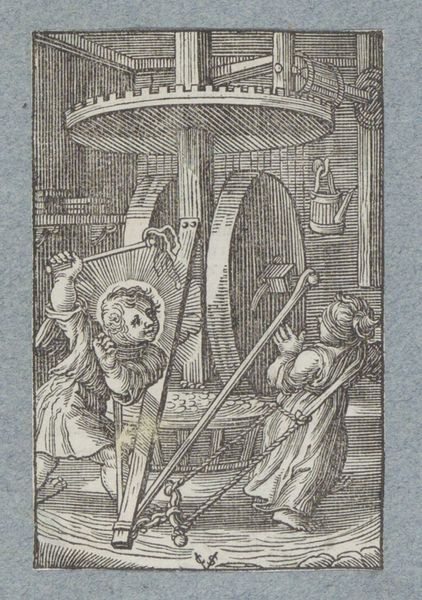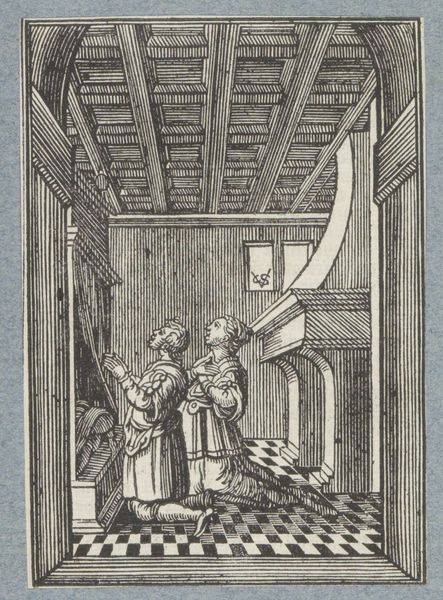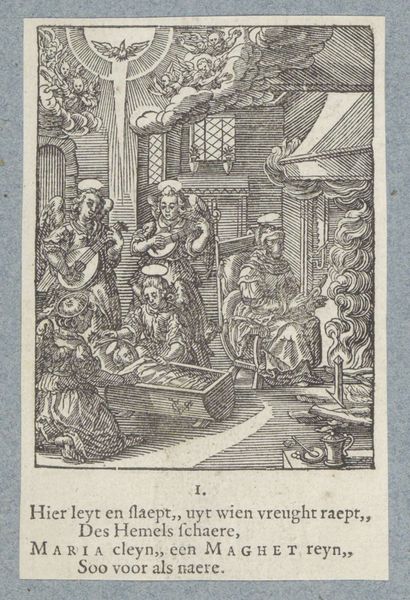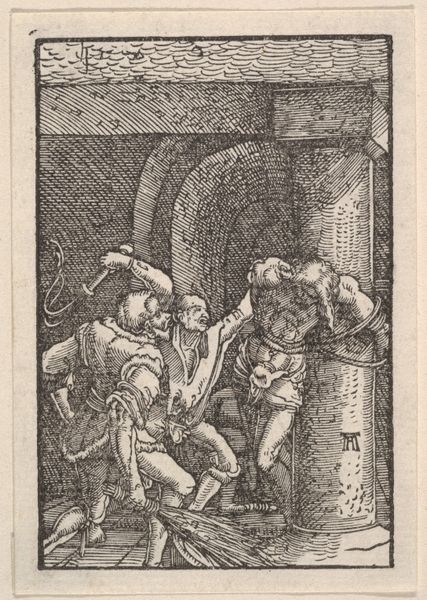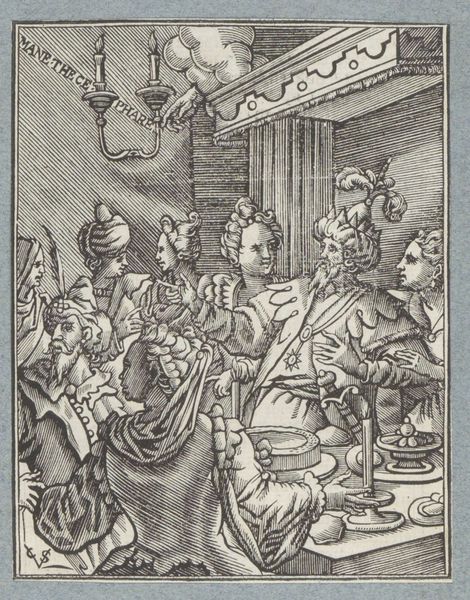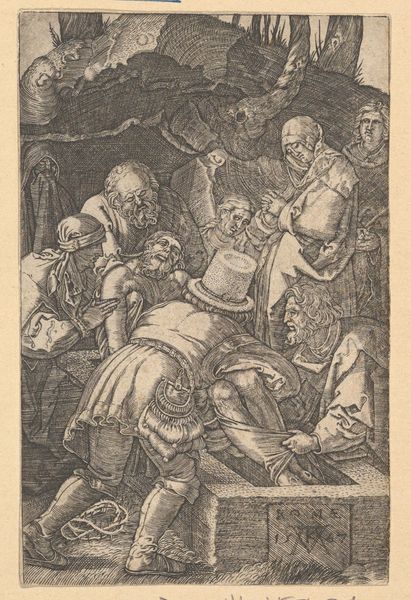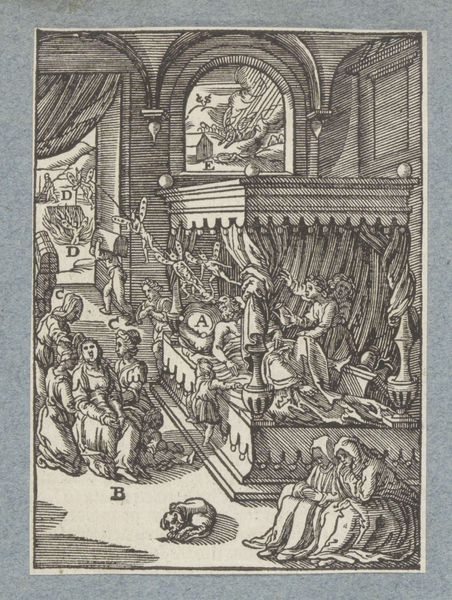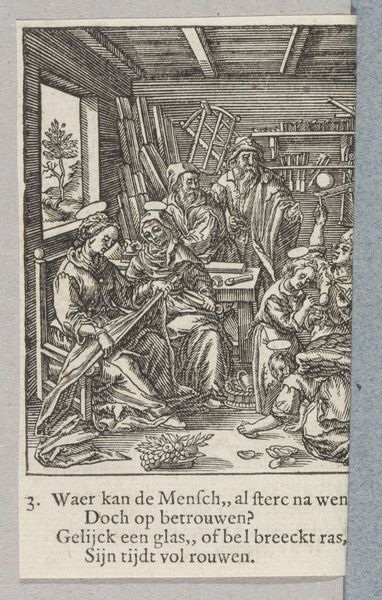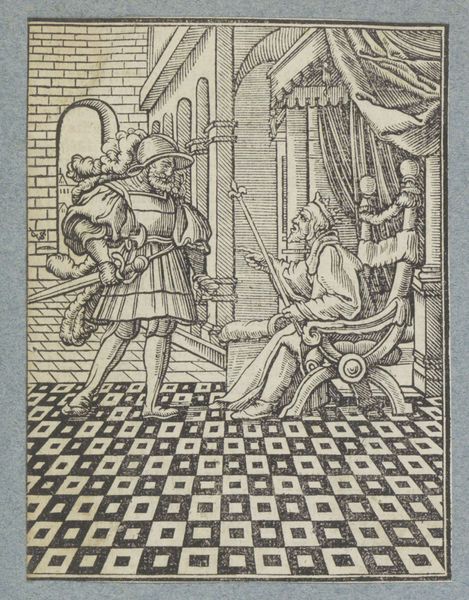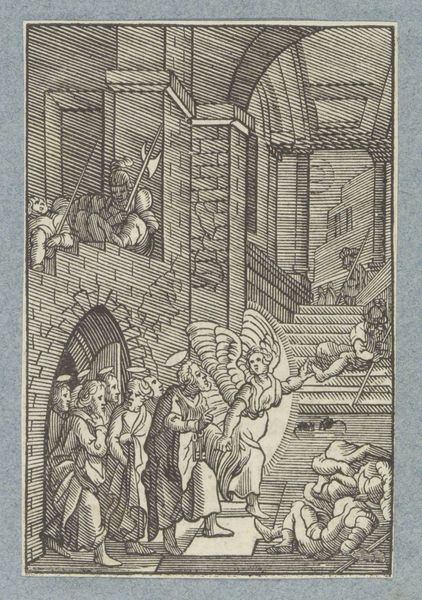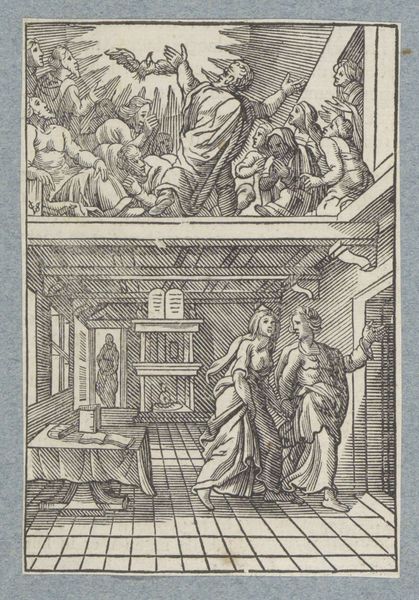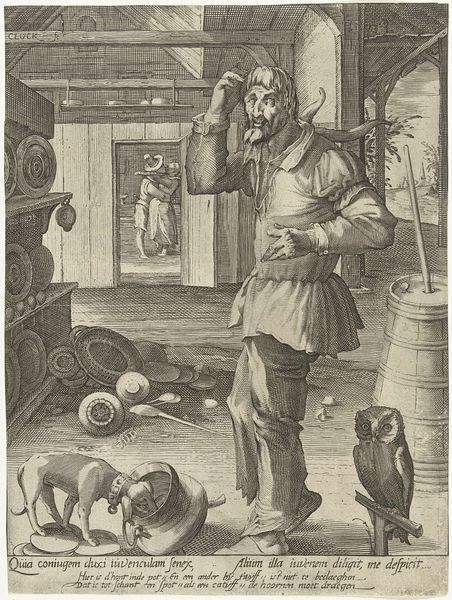
Kind kijkt toe hoe engel beeldje maakt van klei op draaitafel 1628
0:00
0:00
christoffelvaniisichem
Rijksmuseum
drawing, print, woodcut, chalk, engraving
#
drawing
#
narrative-art
# print
#
figuration
#
woodcut
#
chalk
#
genre-painting
#
northern-renaissance
#
engraving
Dimensions: height 83 mm, width 53 mm
Copyright: Rijks Museum: Open Domain
Curator: This is a striking woodcut from 1628 entitled "Kind kijkt toe hoe engel beeldje maakt van klei op draaitafel" by Christoffel van Sichem the Younger, currently residing at the Rijksmuseum. It’s a tableau of an angel, at a pottery wheel crafting a figure, observed by a child, with a collection of statuettes lining the background. Editor: The density of the line work immediately strikes me. It's incredible, how the stark contrast constructs a narrative in such high relief despite its monochrome austerity. Notice how the rigorous geometric form gives the work such narrative intensity and focus? Curator: Indeed. Sichem's strategic use of stark chiaroscuro amplifies the thematic dichotomy. Angels, universally symbolic of purity and divine creation, stand in contrast with mundane artistry, while children are considered by Christianity to be vessels of God and innocence, linking earthly and unearthly creativity. I see in these allusions some subtle social messaging on human ability. Editor: Observe, too, the angel’s action is circumscribed by repetition; that the forms on the shelf behind it are, for the most part, homogenous in their execution indicates an aesthetic judgement of serial creation as lesser than that done by, in some ways, a pure innocent, despite its labor. I feel a critical interrogation, too, of divine symbolism, given the northern Renaissance focus of individualism against faith-based creation of icons. Curator: Precisely. And one sees an intimate and private sphere evoked via what we now identify as "genre-painting," something relatively nascent in Northern Renaissance. Note also, that a chalk drawing likely preceded the engraving and woodcut; the medium and process mirror the action itself. Editor: But even this evokes more: there is a humanistic and tangible rendering, which, for me, further grounds the otherwise arcane activity. It reduces any ethereal pretensions the image might project, and I love this subtle balance of the otherworldly within everyday construction! Curator: I concur. It’s the tension between symbolic intent and material presence that elevates this print. Sichem pushes the symbolic potential of religious tropes right alongside that of human capability, which makes for a complex narrative layering we are lucky to examine centuries later. Editor: Agreed. I am glad we considered the power of light and form today when understanding how iconography meets artistic construction.
Comments
No comments
Be the first to comment and join the conversation on the ultimate creative platform.
